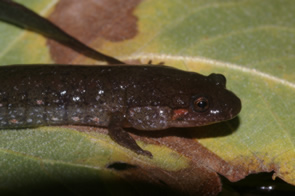
Desmognathus auriculatus
Photo by Jeff Hall
Description: Although there may be local variation in the coloration of this species, southern dusky salamanders are typically dark with a row of spots running down the side of the body and tail. Both the upper surface and the belly of this species are typically dark brown to black, though the underside is scattered with distinct white spots.
Habitat/Range: Southern dusky salamanders typically inhabit swamps and pools in both bottomland forests and flood plains throughout the North Carolina coastal plain. Individuals are most frequently encountered in leaf litter or under decaying logs.
Diet: Southern dusky salamanders have been found to eat a variety of aquatic and terrestrial invertebrates.
Reproduction: Females typically lay eggs close to water and remain with them until hatching. Hatchlings emerge from the eggs and move into the water, where they then go through an aquatic larval stage. Southern dusky larvae have external gills and are fully aquatic while metamorphosed individuals are capable of moving between aquatic and terrestrial habitat.
Miscellaneous: Although still widespread, this species appears to have experienced widespread declines across its range during the past thirty years. In many cases, populations seem to have declined or disappeared in undisturbed areas of pristine native habitat. The cause of these declines is still unknown.
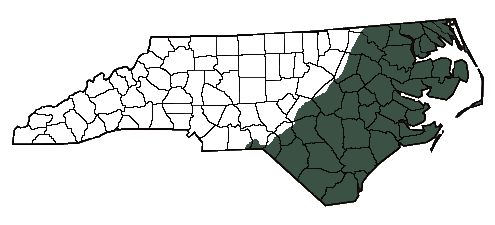
The shaded region represents the range of the southern dusky salamander in North Carolina.
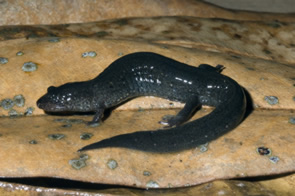
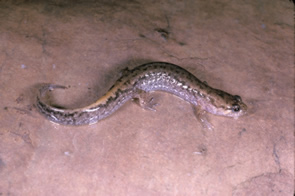
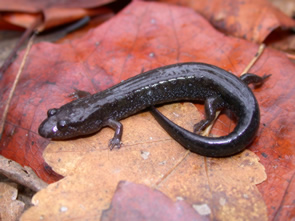
Photo by D Dennis
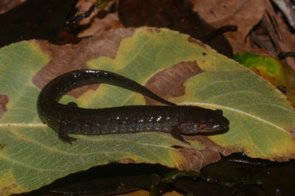
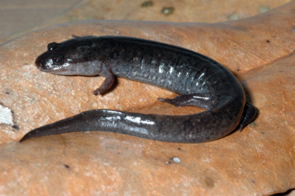
Photo by Jeff Hall
Photo by B Means
